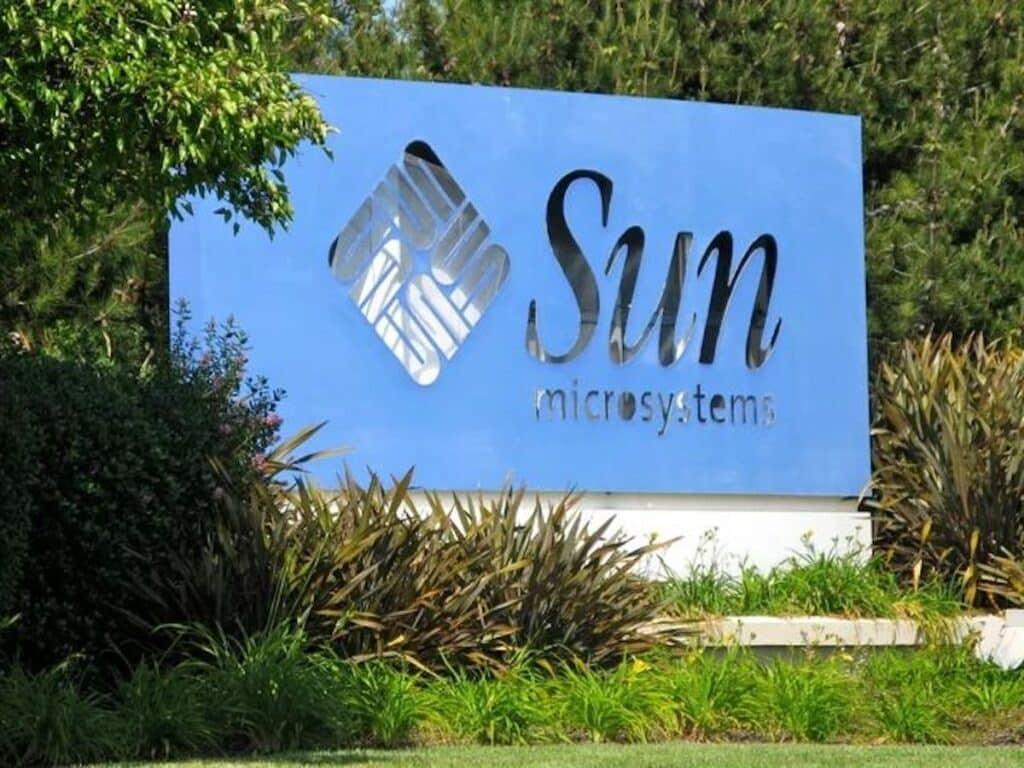At Meta’s headquarters, a relic from a past tech era stands quietly but meaningfully: the original Sun Microsystems sign. More than nostalgic memorabilia, it serves as a cautionary symbol for the future.
In the bustling heart of Meta’s Menlo Park campus—once the headquarters of Sun Microsystems—an unassuming yet powerful reminder of Silicon Valley’s past remains in full view: the original Sun Microsystems sign. Rather than removing it, Meta founder Mark Zuckerberg made the deliberate decision to preserve the sign, flipping it to display Facebook’s logo on one side and Sun’s on the other.
It’s a symbolic gesture, rich in meaning. It stands as a monument to a company that was once at the pinnacle of technological innovation—and a visual warning of what happens when a company stops evolving.
Sun Microsystems: A Tech Powerhouse Ahead of Its Time
Founded in 1982, Sun Microsystems was a titan of the computing world. The company was responsible for some of the most important innovations in modern tech history: the Solaris operating system, the Java programming language, and the MySQL database platform. It championed networked computing, virtualization, and cloud-centric thinking long before those ideas became mainstream.
Its forward-looking slogan, “The Network is the Computer,” encapsulated a visionary concept of distributed systems and cloud infrastructure—decades before the cloud became a dominant computing paradigm.
Sun wasn’t just a tech vendor—it was an innovation engine.
The Decline: From Disruptor to Defended Territory
But success can breed stagnation.
Despite its technological brilliance, Sun Microsystems began to prioritize protecting its existing business over pursuing new frontiers. As the broader industry moved toward commodity servers, open-source software, and cloud-first business models, Sun clung to proprietary hardware, legacy contracts, and traditional licensing revenue. Innovation slowed. Bureaucracy took hold. The culture that once made Sun an icon began to calcify.
By the late 2000s, Sun was no longer the disruptor—it was being disrupted.
In 2009, the company was acquired by Oracle, marking the end of an era.
The Meta Campus: A Sign Turned into a Message
When Facebook acquired the former Sun campus in 2011, Mark Zuckerberg chose to preserve the old Sun sign, turning it backward so that Facebook’s logo faced outward, while Sun’s logo remained visible on the rear side. The positioning was no accident: as employees leave the campus each day, they see the Sun Microsystems logo—a quiet but constant reminder of how even the most admired companies can falter.
“It’s a symbol of what can happen if you stop innovating,” employees were told.
“It’s there to remind us: stay hungry, or risk becoming obsolete.”
The idea echoes Steve Jobs’ famous advice: “Stay hungry, stay foolish.”
In tech, past glory is never enough.
Complacency: The Silent Threat to Innovation
Sun’s downfall wasn’t due to poor engineering or a failed product. It was due to a loss of urgency. The company shifted from creating the future to protecting the past. And while they were busy defending margins and legacy contracts, the world moved on—toward leaner infrastructure, open collaboration, and software-defined everything.
That’s the lesson etched—unspoken but unmistakable—into the Sun Microsystems sign on Meta’s campus:
You can’t defend your way into the future. You have to invent it.
A Daily Reminder for the Builders of Tomorrow
At a time when Meta is facing its own critical transitions—navigating challenges in AI, the metaverse, regulation, and public trust—the old Sun sign has never been more relevant.
It reminds Meta’s employees, and indeed the whole tech industry, that the fall from greatness can be swift, and that momentum is not the same as resilience. Vision must be continually renewed. Success must be re-earned, day after day.
And in a landscape where today’s giants can become tomorrow’s case studies, the sign is not just a memento—
it’s a mirror.
Final Reflection: The Hunger That Builds—and the Hunger That Fades
Sun Microsystems left behind some of the most influential technologies in history. But it also left behind a lesson: ambition is not a phase; it’s a culture.
And so, at the threshold of one of the most powerful companies in the world, the Sun sign remains—not as a celebration of the past, but as a challenge to the future:
Stay curious. Stay bold. Stay hungry.
Because the moment you stop, someone else will take your place.
Source: Revista Cloud

